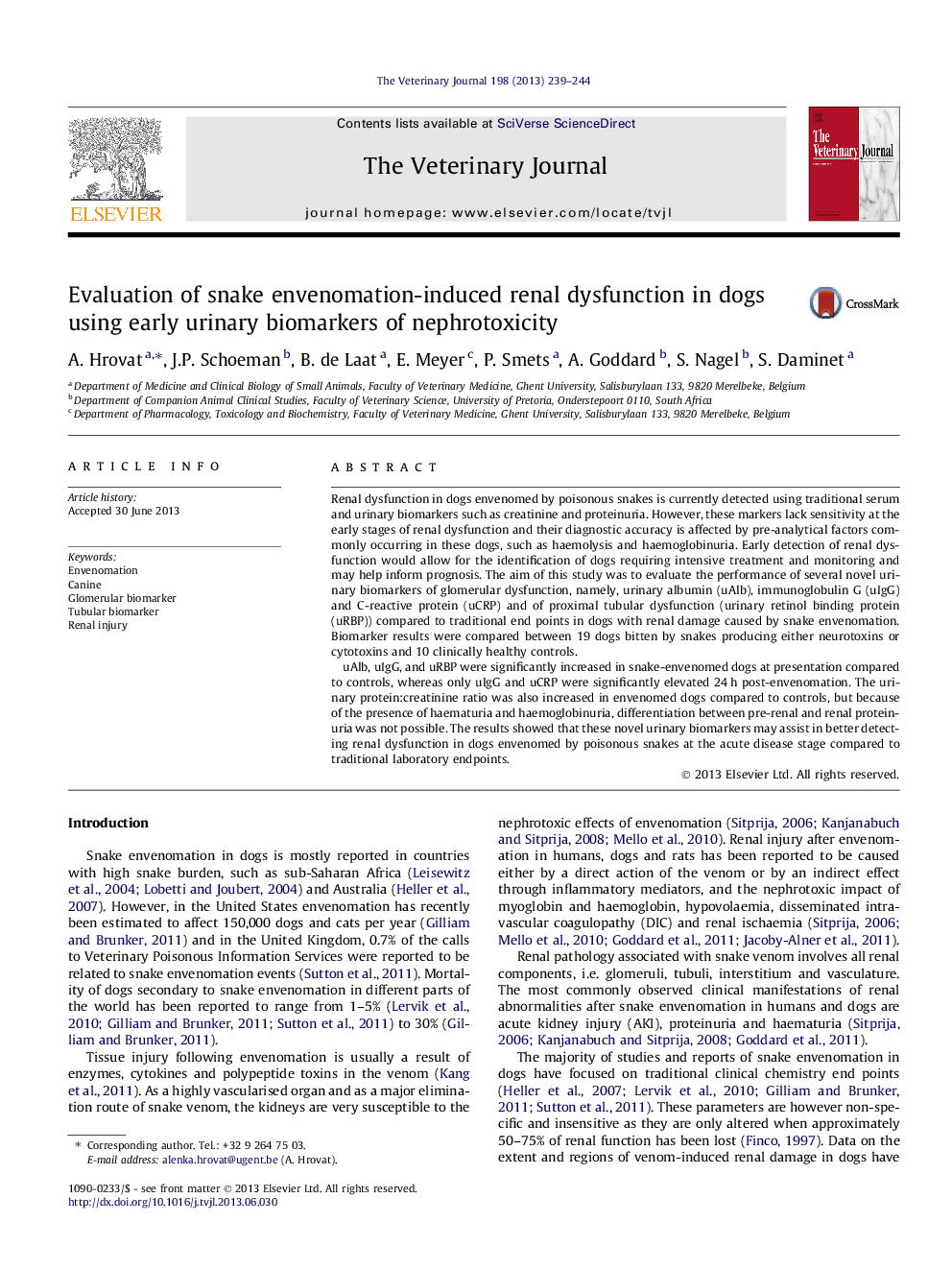| Article ID | Journal | Published Year | Pages | File Type |
|---|---|---|---|---|
| 5798521 | The Veterinary Journal | 2013 | 6 Pages |
Renal dysfunction in dogs envenomed by poisonous snakes is currently detected using traditional serum and urinary biomarkers such as creatinine and proteinuria. However, these markers lack sensitivity at the early stages of renal dysfunction and their diagnostic accuracy is affected by pre-analytical factors commonly occurring in these dogs, such as haemolysis and haemoglobinuria. Early detection of renal dysfunction would allow for the identification of dogs requiring intensive treatment and monitoring and may help inform prognosis. The aim of this study was to evaluate the performance of several novel urinary biomarkers of glomerular dysfunction, namely, urinary albumin (uAlb), immunoglobulin G (uIgG) and C-reactive protein (uCRP) and of proximal tubular dysfunction (urinary retinol binding protein (uRBP)) compared to traditional end points in dogs with renal damage caused by snake envenomation. Biomarker results were compared between 19 dogs bitten by snakes producing either neurotoxins or cytotoxins and 10 clinically healthy controls.uAlb, uIgG, and uRBP were significantly increased in snake-envenomed dogs at presentation compared to controls, whereas only uIgG and uCRP were significantly elevated 24Â h post-envenomation. The urinary protein:creatinine ratio was also increased in envenomed dogs compared to controls, but because of the presence of haematuria and haemoglobinuria, differentiation between pre-renal and renal proteinuria was not possible. The results showed that these novel urinary biomarkers may assist in better detecting renal dysfunction in dogs envenomed by poisonous snakes at the acute disease stage compared to traditional laboratory endpoints.
